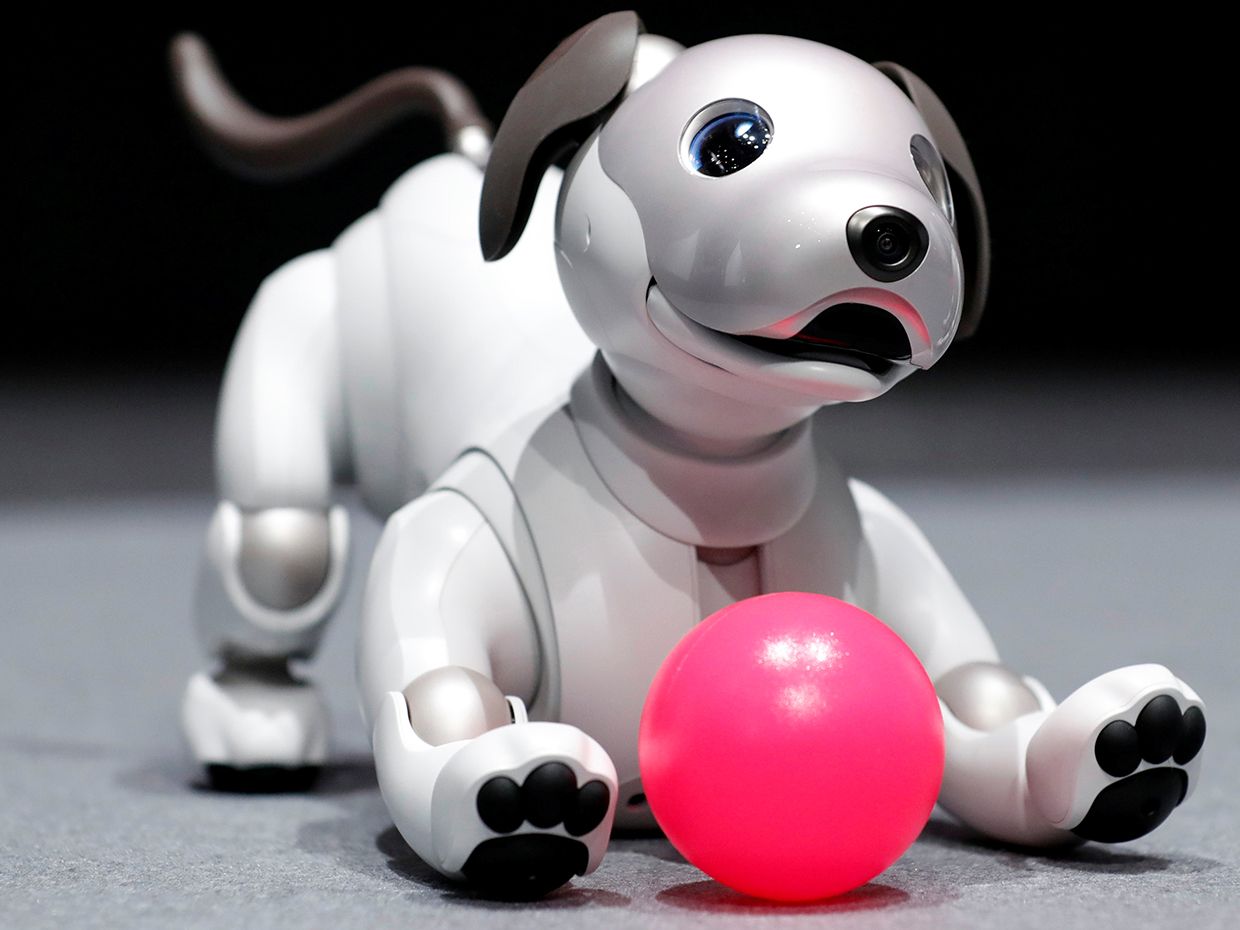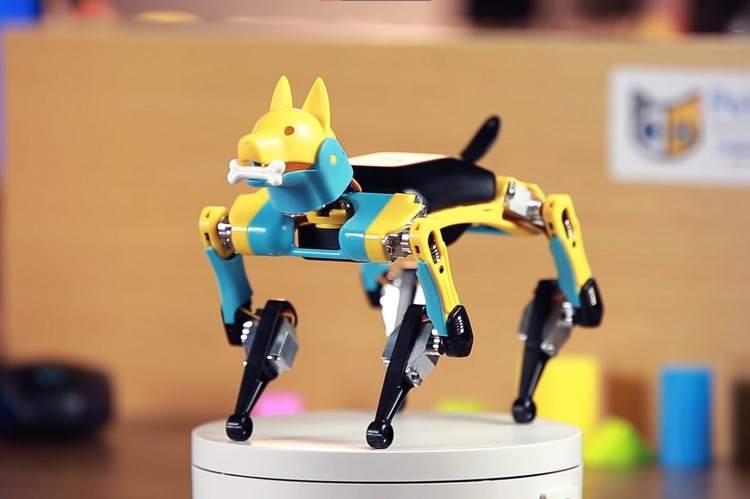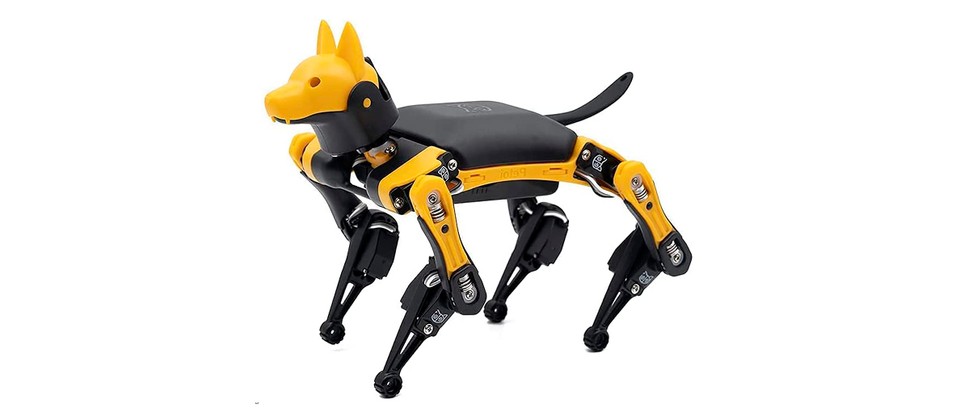You can find robot dogs with all sorts of designs and functions. Some are designed to be pets, while law enforcement teams use others in high-risk situations. Robot dogs come in all price ranges. One of the most expensive dog robots is the AI technology to mimic dog behavior. Most people have mixed feelings about robot dogs. But it may be a more manageable option for those who don’t have the time or ability to care for a live dog.
What is a robot dog?
A robotic dog is a type of robotic device designed to mimic the appearance and behavior of real-life dogs. These machines often use advanced sensors and programming to simulate the movements, sounds, and behavior of real dogs. They may be used for a variety of purposes, including entertainment, education, and research.
What do robot dogs do?
Robot dogs are designed to perform a variety of tasks and functions depending on their intended purpose. Some robot dog toy is designed primarily for entertainment and may be used as toys or companions for those unable to keep a real pet. These machines may be programmed to perform gestures such as walking, running, barking, or juggling.
These machines may be equipped with advanced sensors and cameras to navigate complex environments, collect critical data, or perform specific tasks. In addition, robot dogs are used in research and development. This helps scientists better understand animal behavior and develop new technologies for a variety of applications. Overall, the Robot Dog is an incredibly versatile machine that can be used in a wide variety of settings and applications. This makes it a valuable tool for many industries and fields.
How much is a robot dog?

The robot dog’s price will depend on its purpose and capabilities. A basic toy robot dog costs between $20-$50. An advanced Aibo robot dog with remote control and AI technology can cost between $200-$3,000.
Therapy robot dogs are usually between $100-$300. The most expensive robotic dog type is designed for heavy-duty work, law enforcement, and military use. These dogs easily top $10,000.
Also read: Exploring the Type, Benefits, & uses of Police Robots in Law Enforcement
How to charge a robot dog?
The charging process for robot dogs can vary depending on the particular model and manufacturer. Most robot dogs generally come with a charging cable or a charging dock used to charge the internal battery. Here are some steps that may be involved in the charging process:
- Check your robot dogs manual to determine the type of charger required and any specific charging instructions.
- Connect your charging cable or dock to a power source, such as a wall outlet or USB port.
- Connect the charging cable to the robot dog’s charging port or put the robot dog on the charging stand, depending on the model.
- Wait for the Robot Dog to fully charge. This can take several hours. It depends on battery size and charging speed.
- When the robot dock is fully charged unplugs the charging cable or removes it from the dock.
Following the manufacturer’s instructions carefully is essential to avoid damaging the robot dog’s battery or electrical system. Also, avoid leaving the Robot Dog plugged in for too long, as this can damage the battery.
What is the best robot dog?
There are different types of robotic dog to choose from. Each type has unique properties and abilities. The “best” robot dog for you depends on your specific needs and preferences. Popular robotic dog models include Aibo by Sony, Spot by Boston Dynamics, and CHiP by WowWee. These robots have a number of features, such as advanced sensors, cameras, voice recognition, and interactive play. In the end, the best robot dog is one that meets your needs and has the features and functions you need.
What is the benefit of a robot dog?
One of the advantages of robotic dogs is less responsibility. The dog robot doesn’t need to be fed or taken out to rest. They can even be left alone, and you won’t have to worry about finding a pet sitter or boarding service whenever you are away from home for long periods of time.
Robot dogs are also a great way to teach kids about responsibility without using live animals. They are a safe way to teach children about dogs, and you don’t have to worry about them being accidentally bumped or bitten.
The therapeutic-designed robotic dog could be a boon for seniors who no longer have the mobility to care for a living dog. This type of robotic dog has been shown to help people with loneliness or to help elderly people with dementia.
Can robot dogs smell & swim?
Most robotic dogs do not have the ability to smell like real dogs. However, some advanced models may be equipped with sensors and artificial intelligence to detect and identify different objects and substances.
For swimming, some robot dogs are designed to be waterproof and can move through shallow water or wet environments. However, not all robot dogs are designed for swimming. It’s important to check the manufacturer’s specifications and instructions before immersing your robot in water. Water can also damage the robot dog’s electrical components, so caution is important. Be careful and avoid exposing the robot to excessive humidity.
How much can a robot dog carry?
The weight a robotic dog can carry depends on its size and design. Most consumer-focused robot dogs are designed to carry smaller items, such as toys or treats, and are generally limited to a few ounces to a pound or more. However, advanced military robot dogs weigh up to 20 or 30 pounds. Consult the manufacturer’s specifications and recommendations to determine the maximum weight a robotic dog can carry.
Also read: Military Robots – History, Types, Use and How it work?
Why are robot dogs so expensive?
Robot dogs are often expensive due to the advanced technology and engineering used to design and manufacture them. These machines are often equipped with sensors, cameras, and other components. The development and production of this advanced chip robot dog involve significant R&D costs as well as the use of high-quality materials and components. The limited production and niche market for some robotic dogs can drive prices up. As technology becomes more common and widespread, it’s possible that the cost of robotic dogs could decrease over time.
How long does a robot dog last?
The lifespan of a Robot Dog depends on factors such as the quality of the components used, frequency of use, maintenance, and care a well-groomed robotic dog can usually last for many years. However, it’s important to note that technology is advancing rapidly.
Are robotic pets good?
The answer to whether or not robot pets are good depends on individual preferences and needs. For some people, robot pets can be a great alternative to real pets. They can provide companionship, entertainment, and even healing benefits. This is especially true for people who are unable to take care of real pets. In addition, robot dog Boston dynamics are often designed to be interactive. This can help develop cognitive and social skills in children and the elderly.
They lack the ability to form deep emotional connections or give physical affection, and some people may find them impersonal or unsatisfactory. Moreover, the technology behind pet robots isn’t perfect, and they may malfunction or break, which leads to frustration and disappointment. It Might be a good option for some people, But some people might like the real thing better.
What are the best robot dogs?

Several robot dogs are on the market; each has unique qualities and abilities. Here are some of the best robot dogs:
- Aibo by Sony: Aibo is an advanced robotic dog with a cute appearance and many interactive features such as voice and facial recognition.
- Spot by Boston Dynamics: Spot is a highly versatile robotic dog designed for industrial and military applications. The Boston robotics dog navigates rough terrain, climbs stairs, and carries up to 14kg payloads.
- CHiP by WowWee: CHiP is a consumer robotic dog that can perform various tricks and interact with the owner through voice recognition and touch sensors.
- Zoomer by Spin Master: Zoomer is another famous robotic dog with interactive features such as voice recognition, touch sensors, And a variety of movements and actions
In the end, the best robot dog for you will depend on your needs and preferences, including your budget. Researching and comparing different models is important to find the right model for your needs.
Conclusion:
Robot dogs come in all shapes and sizes and are used in various environments. Most robotic dogs are used for recreational purposes. Some have advanced features that allow them to perform high-stakes jobs. Although the current technology of ai dog robots cannot completely replace live dogs, robot dogs are still a good option for individuals who can’t take care of a real dog. It will be interesting to see how further investment in research and technology will continue to advance the development of robotic dogs and enable them to be used in a variety of environments.
